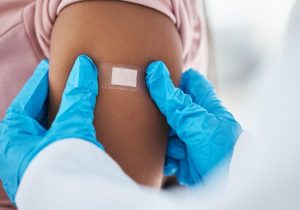To increase domestic supply of intravenous (IV) fluids amid a nationwide shortage, the federal government has established a coordinated effort to import IV solutions from several Baxter International facilities, and the first product shipments arrived in the U.S. on Saturday, October 19. Allocations for hospitals across the country remain at 60% of normal shipment volumes as site remediation and equipment assessments are underway at Baxter’s manufacturing plant in North Carolina, which shut down due to damage from Hurricane Helene.
On Thursday, October 24, Baxter announced it anticipates restarting the highest-throughput IV solutions manufacturing line within the next week, ahead of expectations, but notes that the earliest the new North Cove product could begin entering the distribution channel is mid- to late-November. The company does not have a timeline for when production at the facility will be fully restored to pre-hurricane levels but estimates a return to 90-100% allocation of certain IV solution product codes by the end of the year.
Connecticut hospitals and health systems are continuing mitigation measures to optimize inventory and preserve quality of patient care by conserving product and encouraging all healthcare entities that use IV fluids to do the same. The Connecticut Hospital Association (CHA) is monitoring impacts on operations throughout the state in collaboration with healthcare providers and the Connecticut Departments of Public Health (DPH) and Consumer Protection (DCP). CHA is in communication with Connecticut’s congressional delegation and working with them to elevate member feedback and address concerns. CHA is also continuing to advocate for the federal government to declare a national public health emergency, remove barriers to the global importation of product, and extend the shelf life of all sterile IV and peritoneal dialysis (PD) solutions.
The U.S. Food & Drug Administration (FDA) has released updated guidance for compounding certain parenteral drug products after it added Dextrose 70% IV Solution, Lactated Ringers IV Solution, and Peritoneal Dialysis Solution to the Drug Shortage Database. For the duration of the official shortage, the temporary flexibility allows hospital pharmacies and outsourcing pharmacies to manufacture the listed fluids. The FDA has not yet extended the shelf life for these products but has expedited the review process and recommends facilities keep expired solutions in anticipation of a potential extension. The federal government encourages providers to report fraudulent activity, including price gouging and fixing, here or here.
Baxter acknowledged that its initial promise of 100% allocations to children’s hospitals did not recognize the health systems that have embedded children’s hospitals or large pediatric units. For additional allocations for pediatric use, hospitals and health systems should email HurricaneHeleneSupport@baxter.com with the subject line “Pediatric Allocation Request.” Facilities are reminded to contact their Baxter representative or distributor for supply questions, review the company’s clinical resources webpage dedicated to hosting information on supply chain restoration efforts and education on conservation strategies, and access operational updates here on Mondays and Thursdays.
Baxter’s major manufacturing plant located in Marion, North Carolina provides approximately 60% — or 1.5 million bags — of the IV solutions used every day in the U.S., making the facility the top supplier of hospital IV fluids and PD solutions in the country.
American Society of Health-System Pharmacists (ASHP) has issued recommendations for managing the shortages and exploring alternative hydration and medication delivery methods. The Centers for Disease Control and Prevention (CDC) has also issued a Health Alert Network (HAN) Health Advisory compiling additional resources.
The American Hospital Association (AHA) on October 16 discussed the consequences of the supply chain disruption in a podcast episode. Visit AHA’s webpage for the latest information.





